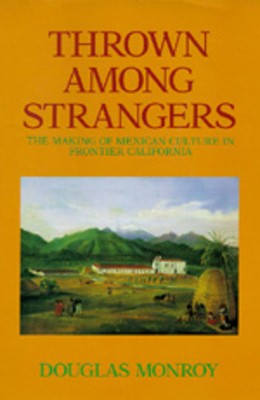
- We will send in 10–14 business days.
- Author: Douglas Monroy
- Publisher: University of California Press
- ISBN-10: 0520082753
- ISBN-13: 9780520082755
- Format: 15.2 x 22.8 x 2 cm, softcover
- Language: English
- SAVE -10% with code: EXTRA
Reviews
Description
Every California schoolchild's first interaction with history begins with the missions and Indians. It is the pastoralist image, of course, and it is a lasting one. Children in elementary school hear how Father Serra and the priests brought civilization to the groveling, lizard- and acorn-eating Indians of such communities as Yang-na, now Los Angeles. So edified by history, many of those children drag their parents to as many missions as they can. Then there is the other side of the missions, one that a mural decorating a savings and loan office in the San Fernando Valley first showed to me as a child. On it a kindly priest holds a large cross over a kneeling Indian. For some reason, though, the padre apparently aims not to bless the Indian but rather to bludgeon him with the emblem of Christianity. This portrait, too, clings to the memory, capturing the critical view of the missionization of California's indigenous inhabitants. I carried the two childhood images with me both when I went to libraries as I researched the missions and when I revisited several missions thirty years after those family trips. In this work I proceed neither to dubunk nor to reconcile these contrary notions of the missions and Indians but to present a new and, I hope, deeper understanding of the complex interaction of the two antithetical cultures.
EXTRA 10 % discount with code: EXTRA
The promotion ends in 18d.00:47:43
The discount code is valid when purchasing from 10 €. Discounts do not stack.
- Author: Douglas Monroy
- Publisher: University of California Press
- ISBN-10: 0520082753
- ISBN-13: 9780520082755
- Format: 15.2 x 22.8 x 2 cm, softcover
- Language: English English
Every California schoolchild's first interaction with history begins with the missions and Indians. It is the pastoralist image, of course, and it is a lasting one. Children in elementary school hear how Father Serra and the priests brought civilization to the groveling, lizard- and acorn-eating Indians of such communities as Yang-na, now Los Angeles. So edified by history, many of those children drag their parents to as many missions as they can. Then there is the other side of the missions, one that a mural decorating a savings and loan office in the San Fernando Valley first showed to me as a child. On it a kindly priest holds a large cross over a kneeling Indian. For some reason, though, the padre apparently aims not to bless the Indian but rather to bludgeon him with the emblem of Christianity. This portrait, too, clings to the memory, capturing the critical view of the missionization of California's indigenous inhabitants. I carried the two childhood images with me both when I went to libraries as I researched the missions and when I revisited several missions thirty years after those family trips. In this work I proceed neither to dubunk nor to reconcile these contrary notions of the missions and Indians but to present a new and, I hope, deeper understanding of the complex interaction of the two antithetical cultures.


Reviews